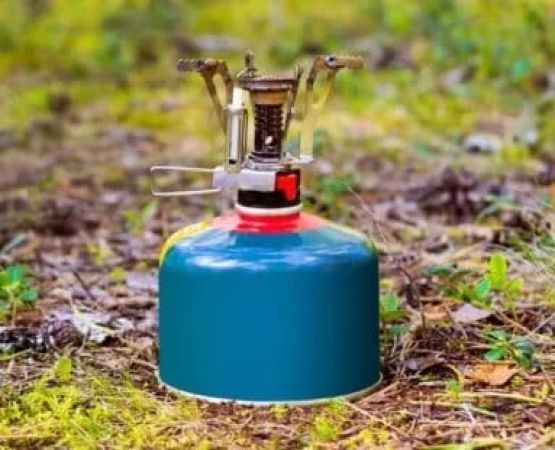Tips for Organizing Camping Gear for Easy Access During Your Outdoor Adventures
- Why Organization Matters for Camping
- Essential Tips for Organizing Camping Gear
- Packing for Accessibility: What to Consider
- Case Study: A Camper's Journey to Gear Organization
- Conclusion: Streamline Your Camping Experience
Why Organization Matters for Camping
When you're heading out into the great outdoors, the last thing you want is to spend precious time fumbling around your gear bag looking for a flashlight or searching for a missing tent pole. The key to a stress-free and enjoyable camping trip lies in how well you organize your camping gear. By keeping everything in its designated place, you can save time, reduce frustration, and make the most of your outdoor experience.
Imagine this scenario: You're halfway through your hike, the sun is setting, and the temperature is dropping. The last thing you want is to find that your gloves are buried somewhere at the bottom of your backpack. Or worse, you discover that your first aid kit is nowhere to be found when you need it most. With a well-organized packing system, you'll avoid these stressful situations and enjoy your camping trip to the fullest.
Essential Tips for Organizing Camping Gear
Effective camping gear organization is all about prioritizing accessibility, minimizing clutter, and ensuring that your most-used items are easy to find. Here are some of the best tips to help you get started:
1. Use Packing Cubes or Storage Bags
Packing cubes are a camper's best friend. These small, lightweight compartments help keep your camping clothes, toiletries, and gear organized. You can label each cube according to its contents (e.g., “sleeping gear,” “cooking supplies,” or “first aid kit”). This system not only prevents things from getting lost in a jumbled mess but also helps maximize the space in your bag.
2. Invest in a Modular Gear System
A modular gear system allows you to pack different pieces of equipment in separate containers that fit together like puzzle pieces. For example, your tent, sleeping bags, and sleeping pads can all go in one container, while cooking equipment and food supplies go in another. This helps you find what you need quickly and ensures your gear stays neatly packed.
3. Color Code Your Gear
Color coding is a simple but effective way to stay organized. Assign each category of camping gear a different color, such as blue for sleeping gear, red for cooking gear, and green for emergency supplies. This visual cue makes it easier to find the right item in a hurry, especially in low-light conditions.
4. Keep a Checklist
A checklist ensures that you don't forget essential items while packing. It also serves as a reference when you’re setting up camp, making sure that all your equipment is accounted for. Consider breaking your checklist into sections like "Tent Setup," "Cooking Gear," and "Personal Essentials" to keep everything organized.
Packing for Accessibility: What to Consider
When organizing your camping gear, it’s important to think about accessibility. Packing items in a way that makes them easy to reach and use can make a huge difference when you’re out in the wild. Here are some helpful strategies:
1. Pack for the Layers of Access
When packing your gear, consider how often you’ll need certain items. Items that you'll use frequently (like a flashlight, map, or sunscreen) should go at the top of your bag or in easy-to-reach pockets. Items you’ll use less often, such as your extra sleeping bag or backup food rations, can go deeper in your pack.
2. Create an "Emergency Kit"
Having a dedicated emergency kit with essential tools like a multi-tool, first aid supplies, and a whistle can make your camping experience much safer. Keep this kit easily accessible in case of an emergency. A small, clear bag that attaches to the outside of your backpack is ideal for quick access.
3. Keep Cooking Gear Accessible
If you’re camping for several days, having easy access to your cooking gear is crucial. Pack your stove, utensils, and food in a way that allows you to quickly assemble a meal after a long day of hiking. Consider using a compact, portable cooking kit with everything in one place.
Case Study: A Camper's Journey to Gear Organization
Meet Sarah, an experienced camper who was tired of digging through her bag in the middle of the night to find her headlamp. On her last camping trip, she spent a frustrating 20 minutes searching for her flashlight, only to realize that it had gotten buried under a pile of extra socks and jackets.
Determined to find a better way, Sarah started organizing her gear using the tips she had read about. First, she invested in modular storage bags for different types of gear. Then, she color-coded her equipment, making sure that everything had its own place. Finally, she used a small external pouch for emergency supplies and packed her most-used items, like her headlamp, at the top of her bag.
The results were dramatic. On her next trip, Sarah was able to set up camp in record time and found everything she needed with minimal effort. The organization didn’t just save her time—it gave her a greater sense of control over her camping experience. She could focus on enjoying the outdoors, rather than stressing about where her gear was.
Conclusion: Streamline Your Camping Experience
When it comes to camping, preparation is everything. Organizing your gear in a way that prioritizes accessibility and reduces clutter will not only save you time but also help you have a more enjoyable outdoor adventure. Whether you're an experienced camper or new to the wilderness, taking the time to properly organize your camping gear is a game-changer.
Now that you know the best tips for organizing your camping gear for easy access, it’s time to start planning your next trip. Ready to hit the trails? Pack smarter, camp easier, and make the most of every moment in the great outdoors!







